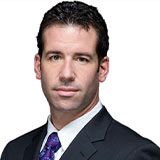Effective preparation is crucial, says Scott Redler, chief strategic officer of T3Live.com, who reviews the steps he takes in order to develop a concise game plan before each day's market open.
Having a game plan before you start the trading day is very important to the trader’s success. Our guest today is Scott Redler; he’s going to talk about his game plan and how he approaches the markets each day.
Scott, so what do you do to prepare for the markets and position yourself for the right side?
I’m a creature of habit and I follow a routine. My routine every day is to get in early and put together a game plan, which includes a price point sheet.
What I do is on my way to work, I read the newspaper (Investor’s Business Daily (IBD)) to figure out what the headlines were pre-market. I come in and look at my hundred stocks, I look at the chart patterns, and then I put together an arsenal of stocks that I trade every day.
Typically, the fastest-moving stocks out there, whether it’s high-beta tech, the financials, some agricultural stocks, lately the casinos, even the rare earth group, and what I want to do is be prepared and know where to look quickly.
So what I do, as you can see here, I put together a price point sheet:
It’s a quick and dirty one sheet where I know what’s going on here. I put some areas of resistance, heavy resistance, support, heavy support, I put action areas where there could be a trigger buy or trigger short, and then I put some commentary just to talk about what the stock has been doing over the course of the past few days.
The commentary right now is important because sometimes there’s no buy or short; it’s just still in a range because it just made a move and it needs to digest it.
NEXT: How to Use the Price Point Sheet in Your Trading
|pagebreak|What I typically do is I put the price point sheet there so at least I know where to look. If all of a sudden, news comes out on Apple (AAPL), I know where heavy support is. If news comes out on Potash (POT) and something comes out overseas, I know where there’s an action area, so I always have something in front of me where I know where to look.
I used to have notepads and scribble scratch and something would come out and you couldn’t get there fast enough to see where you should act. With this one-pager, I know where the tech is, I know usually where the banks are, I know where some of the ETFs that I look at are, and I know what’s going on, and I do it every day in real time because it changes every day.
This way when the market opens, I know my strategy, I’m prepared, I have my levels, I know where there’s action, and I get to execute quickly.
It sounds like it’s all about focus and staying focused and being able to draw information quickly during the day.
It is. You need to be prepared before the next guy. You need to know the levels you’re looking at, what you’re looking to do. A lot of if/thens; my price point sheet has a lot of if/thens.
Almost like an offensive coordinator that prepares for a certain team that’s coming into town, because the game plan is going to change based on what the team that comes into town does also. Then you also have to re-evaluate during the course of the day and see how your receivers are playing, how their defense is stacked up.
So the price point sheet is basically the plan that gives you a bunch of if/thens, and then once the market opens, at least you have a plan to react quickly and know how to get there before the next guy.






















